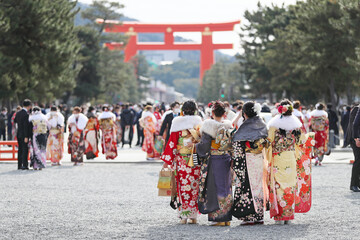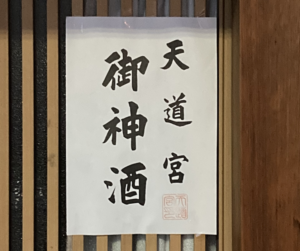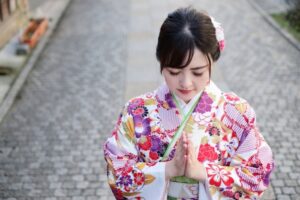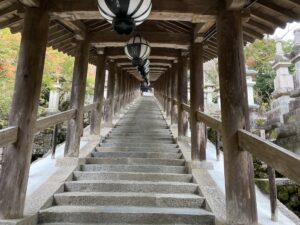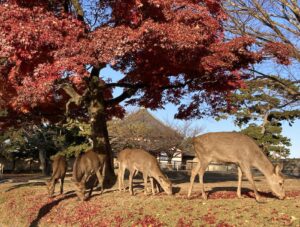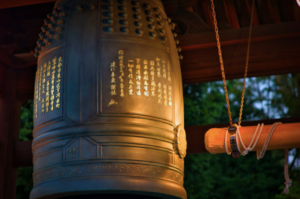In Japan, on the second Sunday or Monday of January, ceremonies are held throughout the country to celebrate young people turning 20. Many women will wear Furisode, the formal attire for unmarried women. It will be the day when the number of people wearing kimono is the largest in the year.
What is Seijin-Shiki?
Seijin-Shiki is a coming-of-age ceremony held by local governments to encourage and congratulate those who turn 20 years old during the school year.
Seijin-no-Hi (Coming of Age Day) is a national holiday on the second Monday of January, but the ceremony is often held the day before.
What age is an adult in Japan?

Currently, the age of adulthood in Japan is 18 years old.
Due to a revision of the Civil Code, the age of majority has been changed from 20 to 18 as of April 1, 2022.
At the age of 18, one has the right to vote, and can sign contracts for credit cards, cell phones, house rentals, car loans, etc. without parental consent.
The age limit for drinking, smoking, and public gambling such as horse racing and auto racing remains unchanged at 20.
Origin of the Coming-of-Age Ceremony
Rituals to celebrate “coming of age” have existed in Japan since ancient times. It was a rite of passage within the family, not a community event.
Today’s coming-of-age ceremonies, in which participants are gathered together in each municipality, are said to have started in 1946, after World War II. It was planned to give hope and encouragement to young people who were in a state of despair due to the defeat in World War II.

The Japanese government has designated January 15 as “Coming of Age Day” as a national holiday since 1949, and in most regions, coming-of-age ceremonies are held on that day.
- In 1998, the law was amended and Coming of Age Day was moved to the second Monday of January.
- Depending on the locality, the ceremony may be held on a major vacation in May, during the Obon (August vacation), or during the New Year’s holiday.
Participants in the Coming-of-Age Ceremony
Those eligible to participate in the Coming-of-Age Ceremony are “those who will be 20 years old during that school year (April to March).
Purpose of Coming of Age Ceremony
Coming of Age Day was established to “celebrate and encourage young people who are aware that they have become adults and are striving to live on their own“.
Today, the purpose of the event is still carried on, but it has become just a fun event for young people.

- Reuniting with friends who have moved away after graduating from high school
- Gathering with friends in their formal wear such as suits and furisode (long-sleeved kimono).
- Taking pictures with friends and family in formal wear.
Confused by the name of the ceremony?
Since the age of adulthood was 20, the ceremony was called the “Seijin-Shiki” in many localities.
Starting April 2022, the age of adulthood will be 18, but the celebration will remain at 20. To avoid confusion, an increasing number of local governments are changing the names of the ceremonies, such as “Gathering of 20-year-olds” or “Celebration of 20 years old”. On the other hand, some municipalities do not change the name of the ceremony at the request of the participants.
Is it traditional to wear Furisode for Coming-of-Age Ceremony?

Most women who participate in coming-of-age ceremonies wear Furisode (long-sleeved kimono). Most men wear suits, but some wear Hakama (traditional Japanese male dress).

Furisode” is very expensive, but opportunities to wear it are limited. Recently, there are many rental costumes instead of purchasing, but they still cost more than 100,000 yen. Even so, participants and their parents still prefer to wear Furisode because “it is a tradition” and “it is a once-in-a-lifetime ceremony”.
Is wearing Furisode at the Coming-of-Age Ceremony really a tradition?
No. Wearing Furisode for Coming of Age Ceremony is a “created tradition“.
The ban on luxury items during World War II and subsequent lifestyle changes devastated the kimono industry. As a recovery measure, from the late 1950s to the early 1960s, department stores of the time promoted Furisode, which was the formal attire for unmarried women, as a coming-of-age ceremony costume.

Since it is difficult to put on a furisode, a kimono stylist will help. Other services include the purchase of accessories, hair and makeup, and commemorative photo shoots. This is a great business opportunity for the kimono industry, the beauty industry, and the photography industry.
Japanese people love coming-of-age ceremonies
One-half Coming of Age Ceremony
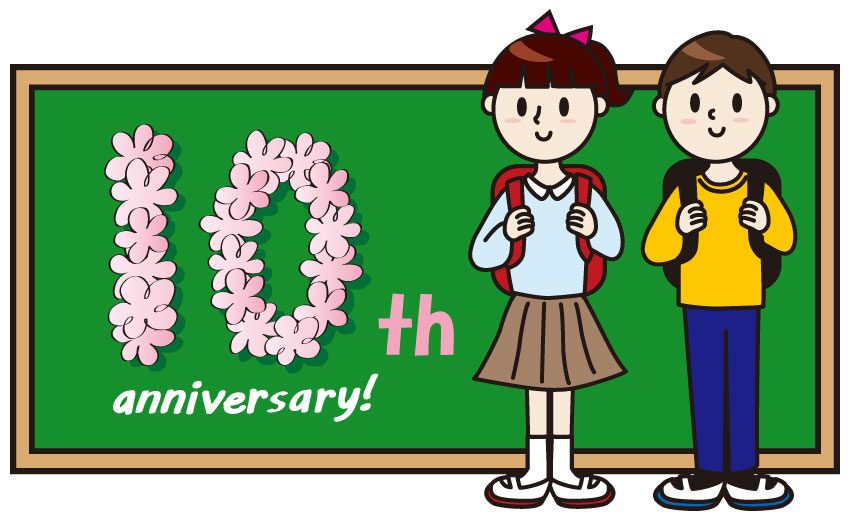
This ceremony is for 10-year-olds, half the age of 20. It used to be a school event in some areas, but is spreading nationwide.
Recently, they have become a business, not just a school event. Family photo shoots at photo studios are popular, with boys wearing suits and Hakama, and girls wearing dresses, Furisode, and Hakama.
Interesting Coming of Age Ceremonies
- Second Coming of Age Ceremony: A celebration for 25 year olds who have received the right to vote
- Misoji-shiki: An event to encourage and congratulate those turning 30.
- W Coming of Age Ceremony: Gathering for 40 year olds as well.
↑ These are events limited to certain areas.

Every year there are many opinions about the attitude of young people at the ceremony and the businessization of the ceremony, including costumes. In Japan today, the birthrate is declining and the number of people coming of age is also decreasing. There will be changes, both as a culture and as a business opportunity. However, it is likely that it will remain the day when we will see many women wearing Furisode for a while longer.

A VPN is required to use Japanese websites, TV, and video viewing services overseas. NordVPN is easy to use and cost-effective! 30 days money back guarantee.
^^ Access Japanese content safely and reliably! ^^

